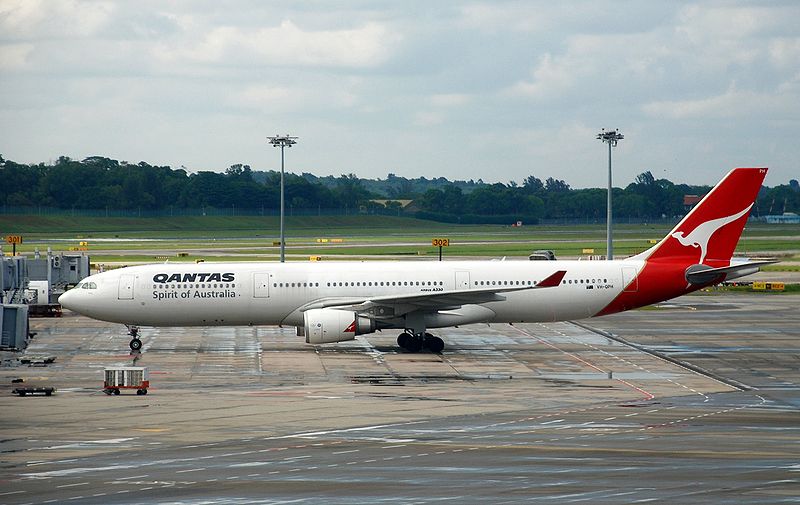Even if it is too early to have a full explaination of the causes of the Qantas flight QF72 plunge that caused many injuries (see also: “Qantas flight forced to land: is turbulence dangerous?”) the preliminary review of the data recorded by the Digital Flight Data Recorder (DFDR) made by the ATSB indicated that the event developed in three steps:
the aircraft was levelled at FL370 when initiated an uncommanded climb of about 200 ft, before returning back (autonomously to 37.000 feet).
About 1 minute later, the aircraft pitched nose-down, to a maximum pitch angle of about 8.4 degrees, and plunged about 650 feet in about 20 seconds, before returning again to FL370.
Finally, about 70 seconds after returning to the cruising level, it pitched again nose-down, to a maximum angle of about 3.5 degrees, and descended about 400 feet in about 16 seconds, before returning once again to FL370.
Such a “behaviour” seems to rule out the hypothesis of a CAT (Clear Air Turbulence) and the ATSB is in fact focusing on the faulty data in Air Data Intertial Reference Unit (ADIRU) 1 that “deceived” the aircraft’s flight control system.
The ADIRU is an aircraft’s vital system. It feeds other on board key systems (autopilot, engine control system, flight control system, etc) with information about speed, altitude, position and attitude of the plane. On board the Qantas 72 flight, the ADIRU generated false warnings (stall, over-speed, etc) that the flight control’s computer faced with incorrect aircraft movements.
The reason for the faulty data is still unclear. Someone pointed to the possible corruption caused by an electronic interference from an onboard portable device (laptop, PDA, tablet pc, etc.). Following the event, the ATSB initial report, Airbus issued recommendations to A330 and A340 operators that are equipped with the same ADIRU, including guidance and checklists for crew response in case of a similar inertial reference system failure.
It was most probably Severe turbulence, to cause the one that caused some injuries on Sept. 20. A China Airlines B747-400 serialled B-18211, flying as CI687 from Taipei to Denpasar, Bali, encountered severe turbolence overflying North Sulawesi. According to the news report, 13 people on board were injured, 8 of whom were taken to hospitals after the aircraft landed in Denpasar. According to the news reports, the aircraft plunged some 3.000 meters.
A part of the ATSB media release on QF72, dated Oct. 9, is worth a note, because it underlines something I always say when discussing flight safety and similar accidents:
“….we cannot pre-empt the findings in relation to cabin safety issues and the wearing of seatbelts, but this accident does serve as a salient reminder to all people who travel by air of the importance of keeping seatbelts fastened at all times when seated in an aircraft.”
Image credit: Wiki









